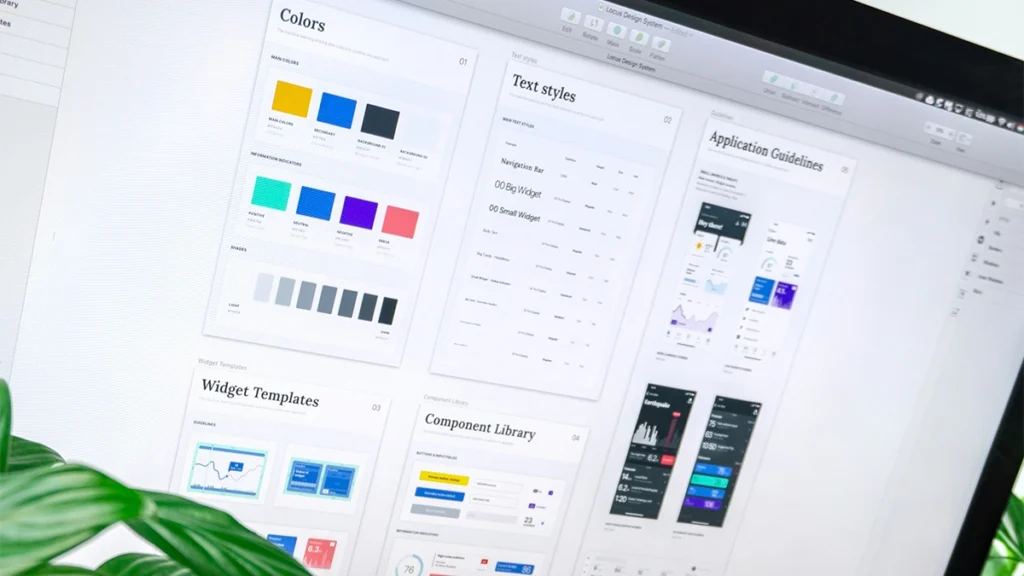When you’re running a small business or startup, you’re juggling everything from product development and customer service to accounting and marketing. But one of the most important—and often overlooked—parts of building a successful business is having a clear brand strategy.
In this guide, we’ll break down what a brand strategy is, why it matters for small businesses, and how you can start building your own brand strategy today. Whether you’re launching your first side hustle or you’re a few years in and want to sharpen your brand, this post is for you.
What is a Brand Strategy?
Let’s start with the basics. A brand strategy is a long-term plan that defines your brand’s purpose, values, messaging, and positioning. It’s more than just your logo and colour palette—it’s the overall personality and perception of your business.
Your brand strategy helps shape how people see and feel about your business. It covers everything from how you talk on social media, to the experience people have on your website, to the way your product or service makes them feel.
A solid brand strategy for small business is like a compass. It keeps everything pointing in the right direction, so you can grow with consistency and confidence.
Why Brand Strategy Matters for Small Businesses
You might be thinking, “Isn’t a brand strategy for the big guys with massive marketing teams?” Absolutely not.
In fact, having a strong brand strategy is even more important for small businesses because:
- It builds trust – People buy from brands they trust. A consistent, well-thought-out brand builds credibility.
- It makes you memorable – In a sea of competitors, standing out is vital. Your brand gives people something to remember you by.
- It attracts the right customers – Clear branding helps you connect with people who actually want what you’re offering.
- It saves time and money – With a strategy in place, you won’t waste time second-guessing design or messaging decisions.
Need help developing your brand?
Check out our branding services for small businesses
The Building Blocks of a Brand Strategy
Let’s dive into the key elements of a brand strategy for small business:
1. Brand Purpose
Why does your business exist beyond making money? What problem are you solving, and why do you care?
Your purpose sets the tone for everything else. It helps you and your team stay motivated, and it resonates with customers who share your values.
Example: “We help local families eat better by delivering fresh, affordable meal kits to their doorstep.”
2. Target Audience
Who are you trying to reach? Get specific. The more you understand your ideal customer, the easier it is to speak their language.
Consider demographics (age, location, income) as well as psychographics (interests, values, lifestyle). Create a customer persona or two to keep your messaging sharp.
3. Brand Values
What do you stand for? Your values guide how you behave, interact with customers, and make decisions.
Are you all about sustainability, simplicity, innovation, or community? Define your core values and stick to them.
4. Brand Personality
If your brand were a person, what kind of person would it be? Fun and friendly? Professional and reliable? Bold and daring?
Your brand personality influences your tone of voice, visual identity, and overall vibe. Consistency here is key.
5. Visual Identity
Now we get to the fun stuff—logos, colours, fonts, and imagery. Your visual identity should reflect your brand personality and appeal to your target audience.
But remember, it’s not just about looking good. It’s about being recognisable and consistent across every touchpoint: your website, social media, packaging, signage, and more.
6. Messaging
This is how you communicate your brand. Your messaging should be clear, confident, and consistent.
- What’s your elevator pitch?
- What makes you different?
- What promises do you make to your customers?
Work on your brand voice, tagline, and key messages so people instantly understand what you’re about.
7. Positioning
Where do you sit in the market compared to your competitors? Are you the affordable option, the luxury brand, the eco-conscious choice?
Your positioning should reflect what makes you unique and relevant to your audience. It’s all about carving out your space and owning it.
How to Build a Brand Strategy for Your Small Business
Now that we’ve covered the essentials, let’s look at how you can build your own brand strategy from scratch.
Step 1: Do a Brand Audit
Start by assessing where your brand stands right now.
- What’s working?
- What feels off?
- How do customers currently see you?
- What feedback have you received?
Look at your website, social media, marketing materials, and customer reviews. Be honest and objective.
Step 2: Define Your Core Elements
Using the building blocks above, write down your brand purpose, audience, values, personality, and so on. Keep it simple and clear.
This becomes your brand blueprint—a reference for everything you do moving forward.
Step 3: Create Visual and Verbal Guidelines
Once your strategy is in place, design your visual identity (or refine what you’ve got). Create brand guidelines that include your:
- Logo usage
- Colour palette
- Fonts
- Image style
- Tone of voice
- Messaging examples
This helps keep things consistent, especially if you’re working with freelancers, agencies, or a growing team.
Step 4: Apply It Everywhere
Your brand strategy isn’t just a document to file away. Put it into action.
- Update your website and social media profiles
- Write content in your brand voice
- Use your colours and logo consistently
- Make customer experiences reflect your brand values
Every touchpoint should tell the same story.
Step 5: Review and Evolve
Your brand will grow as your business does. Schedule regular check-ins to see what’s working and where you can improve.
Don’t be afraid to adapt—but do it with intention. Any changes should still align with your overall brand strategy.
Examples of Great Brand Strategies
Here are a few companies that have nailed their brand strategy:
1. Innocent Drinks
- Brand Purpose: Make it easy for people to live well.
- Brand Personality: Playful, friendly, and informal.
- Why it works: From their cheeky tone of voice to their simple, clean packaging, everything about Innocent is consistent. Their values (natural ingredients, sustainability) shine through in every touchpoint.
2. Patagonia
- Brand Purpose: Save the planet through responsible business practices.
- Brand Personality: Bold, activist, sincere.
- Why it works: Patagonia’s branding goes beyond selling outdoor gear—they’re known for standing up for causes. Their customers love them for it, and their branding reflects that mission in everything they do.
3. Gymshark
- Brand Purpose: Empower people to be their personal best.
- Brand Personality: Energetic, community-driven, modern.
- Why it works: They’ve built a global fitness community by using relatable content, influencer marketing, and sleek design. Their brand feels youthful and connected.
Common Mistakes to Avoid
Even with the best intentions, small businesses sometimes stumble when building a brand. Here are a few pitfalls to watch out for:
- Trying to appeal to everyone – If you try to reach everyone, you end up reaching no one.
- Being inconsistent – Mixed messages and visuals confuse customers. Consistency is key.
- Copying competitors – It’s fine to get inspired, but your brand needs to be uniquely you.
- Ignoring customer feedback – Your audience can offer valuable insights. Listen to them.
Tools to Help You Get Started
You don’t need a huge budget or a full design team to build a great brand. Here are some helpful tools:
- Canva – For creating branded graphics and templates
- Coolors – For building your colour palette
- Google Fonts – For free, web-friendly typography
- Looka – For DIY logo design
- Notion – To organise your brand strategy and guidelines
Final Thoughts
A strong brand strategy for small business isn’t a luxury—it’s a necessity. It’s what turns casual browsers into loyal customers. It’s what helps you stand out, stay focused, and scale with confidence.
Don’t worry if you’re not a branding expert. Start small, stay true to your values, and keep refining as you go.
And if you ever need a hand with branding or design, you know where to find us.


